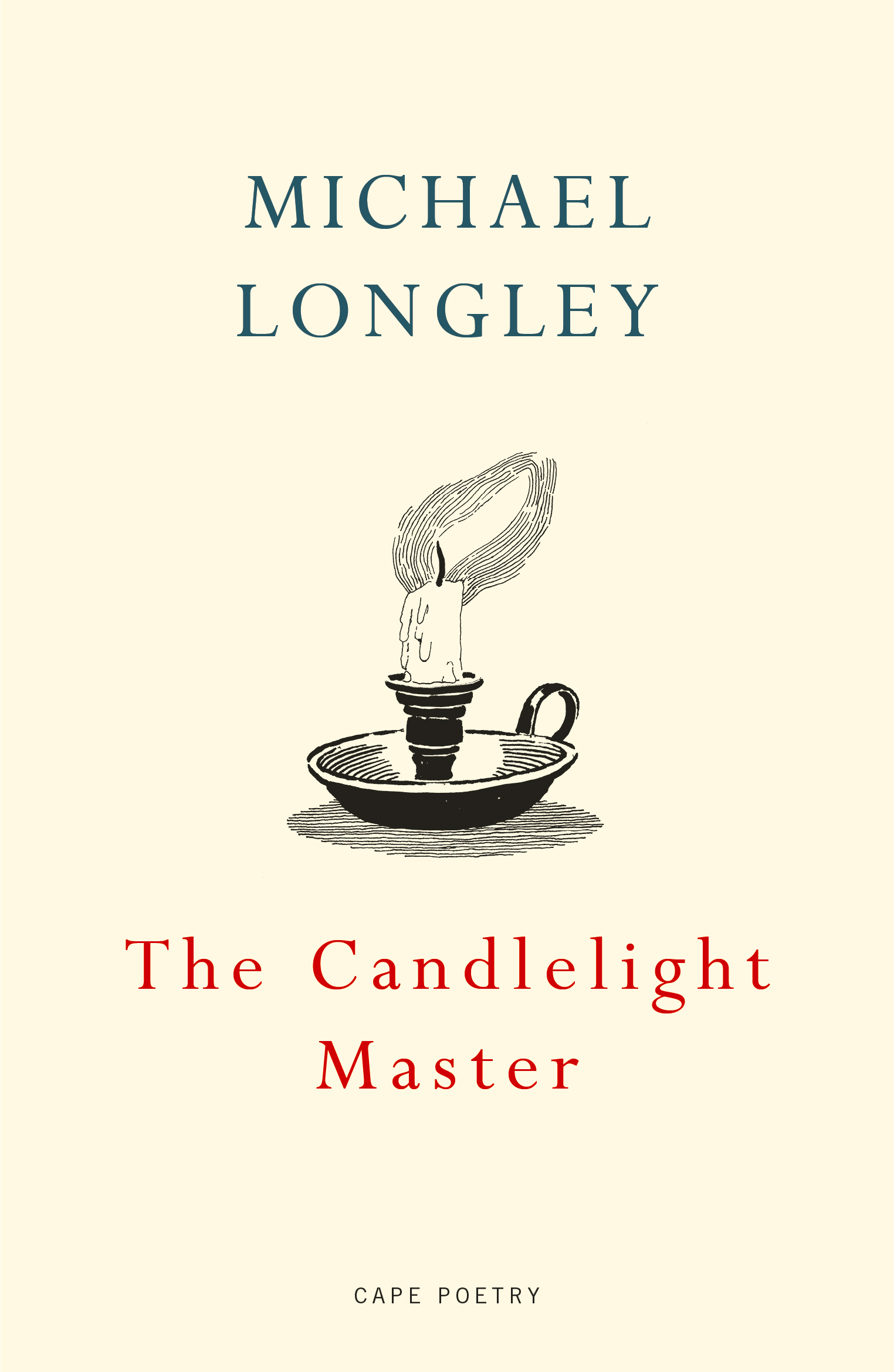Michael Longley is a veteran Northern Irish poet who has published eleven standalone collections of poetry, as well as collections of prose. He won the Hawthornden Prize and T.S. Eliot Prize in 2001 for his collection The Weather in Japan. His latest collection, The Candlelight Master (Cape Poetry, 2020), continues many of the themes that have hitherto dominated Longley’s work: flora and fauna; the intertwining of local, global and classical histories; elegy.
These were things I spotted from reading the table of contents (ToC) alone, and they got me thinking about how we read collections of poetry. I was clearly directed by reading the titles of the poems, and in response I almost instantly put these titles into context alongside the knowledge I already had of Longley’s poetry. The title ‘Ledwidge’ immediately prompted my knowledge of the Northern Irish poet Francis Ledwidge who fought for the British in the First World War.[1] The title ‘Xanthos’ made me rack my brains for stories of this horse of Achilles, the ancient Greek hero. The consecutive poems ‘Brother’ and ‘Peter’ reminded me of the passing of Longley’s twin brother several years ago, a loss that dominated a previous collection, The Stairwell (2014), driving me to tears when I first read those poems.
As I read the contents, two things struck me. First, that I was pre-reading the poems by virtue of their mapping in the contents. Second, that I was pre-reading the contents by virtue of my prior knowledge of Longley’s poetry. This blog is about the first of these.
In Paratexts: Thresholds of Interpretation (1987), Gérard Genette writes about the ‘accompanying productions’ of any book. His own ToC details the kinds of thing he means, including the name of the author, titles, dedications and inscriptions, epigraphs, prefaces, and notes. These paratexts ‘surround’ and ‘extend’ the text itself and ‘present it, in the usual sense of this verb but also in the strongest sense: to make present, to ensure the text’s presence in the world, its “reception” and consumption in the form […] of a book’.[2] Put more simply: a book is more than the words on the page that tell its story, spin its lyrical yarns, or let the characters speak.
The ToC comes under Genette’s idea of ‘intertitles’:
First and most obviously: in contrast to general titles, which are addressed to the public as a whole and may have currency well beyond the circle of readers, internal titles are accessible to hardly anyone except readers, or at least the already limited public of browsers and readers of tables of contents; and a good many internal titles make sense only to an addressee who is already involved in reading the text, for these internal titles presume familiarity with everything that has preceded.
Genette, Paratexts, p. 294.
Genette touches on precisely what I was feeling: that these ‘intertitles’—or, titles of poems in the case of this collection—make sense to me because I am ‘already involved in reading the text’ and they ‘presume familiarity’. This alters the way we should think about the process of reading. In this case, it is the way I am reading poetry in which I am already interested; however, it would also be worth thinking about how I might respond to a collection of poems from a poet with whom I am unfamiliar.
But Genette goes on to make two statements with which I instinctively disagree. First, whilst I agree that ‘Each poem is in itself a closed work that may legitimately claim its own title’, I don’t agree that ‘the effect of sequence or progression’ in a collection of poetry ‘is usually very weak’. Second, the idea that ‘The table of contents […] is in theory no more than a device for reminding us of the titular apparatus’.[3] Based simply on my experience of reading the ToC in Longley’s The Candlelight Master—which is but one instance of this experience—I feel that the construction of the collection is not arbitrarily, but effectively structured. Reading the poems confirms my suspicion.
For example, the adjacent poems ‘Xanthos’ and ‘Empty Chariots’ suggest a thematic unit in the otherwise undifferentiated ToC (i.e., there are no sub-headings). The poems visually oppose each other on a verso (left-hand) and recto (right-hand) page. After the horse tells Achilles that ‘”you yourself are going to die soon”‘, Achilles ends the sonnet confessing that
‘I know I am doomed to die at Troy
Far away from my father and mother.
I prepare to die and annihilate.’
‘Xanthos’ in Michael Longley, The Candlelight Master (London: Cape Poetry, 2020), p. 10.
The simplicity of Achilles’ preparedness is powerful enough, but becomes increasingly elegiac after ‘Empty Chariots’, in which a six-line poem describes a scene of martial desolation:
Many horses with high-arching necks
Made their empty chariots clatter along
Down the lines of battle, in mourning
For their irreplaceable charioteers
Who lay on the battlefield, far dearer
To the vultures than to their wives.
‘Empty Chariots’ in Longley, The Candlelight Master, p. 11.
Primarily, the second poem returns us to thinking about the anthropomorphic power of animals, whether real or mythical,[4] but it also helps us to rethink the preceding poems ‘War’ and ‘Glory’ that are also about the Trojan War, and the succeeding poems ‘Moths & Butterflies’, ‘Dandelions’, and ‘Primo’s Question’, all of which are about Second World War concentration camps and the Shoah. The stringing of these poems in sequence mutually affects their meanings.
Some of these connections can be deduced prior to reading the poems. ‘War’, ‘Glory’, ‘Xanthos’, and ‘Empty Chariots’ are clearly connected; however, it is only when reading the allusively-titled poems about the Shoah that that I discern the full connections across the collection. This has other consequences that shift emphasis from pre-reading a poetry collection, to re-reading or re-thinking it. Thus, having now read the collection, and having made note of the connections between these war-inflected poems, when I re-read the ToC I am reading the collection afresh. Again, counter to Genette’s ideas, now the ToC carries greater evidence of the collection’s deliberate and powerful construction and ordering.
This leads me to conclude by correcting another of Genette’s assertions. He writes that ‘one sign of a paratext’s effectiveness is no doubt its transparency: its transitivity. The best intertitle, the best title in general, is perhaps the one that goes unnoticed’.[5] However, I believe that a closer scrutiny of the ToC, perhaps especially so in the case of a collection of poetry, can alter and even edify our experience of reading. This is no doubt truest when reading such a carefully orchestrated collection such as Longley’s The Candlelight Master.
[1] Francis Ledwidge (1887–1917) was an Irish nationalist who died fighting for the British at Paschandaele. For many years there were accusations that any Irish citizens fighting for the British were damaging Ireland’s cause for self-determination; it seemed even stranger that a profound Catholic nationalist would fight for the colonial power. However, in recent years the attitudes to Irish national soldiers has become more sympathetic. Like Longley, Seamus Heaney also wrote about Ledwidge. ‘In Memoriam Francis Ledwidge’ from 1979’s Field Work includes a memorable description that sums up the issues surrounding Ledwidge as an Irish hero: ‘our dead enigma’.
[2] Gérard Genette, Paratexts: Thresholds of Interpretation, trans. by Jane E. Lewin (Cambridge: Cambridge University Press, 1997 [1987]), p. 1.
[3] Genette, Paratexts, pp. 312, 317.
[4] I have written elsewhere on this blog about the growing prevalence of animal/posthuman studies in academic circles.
[5] Genette, Paratexts, p. 316.


Leave a Reply